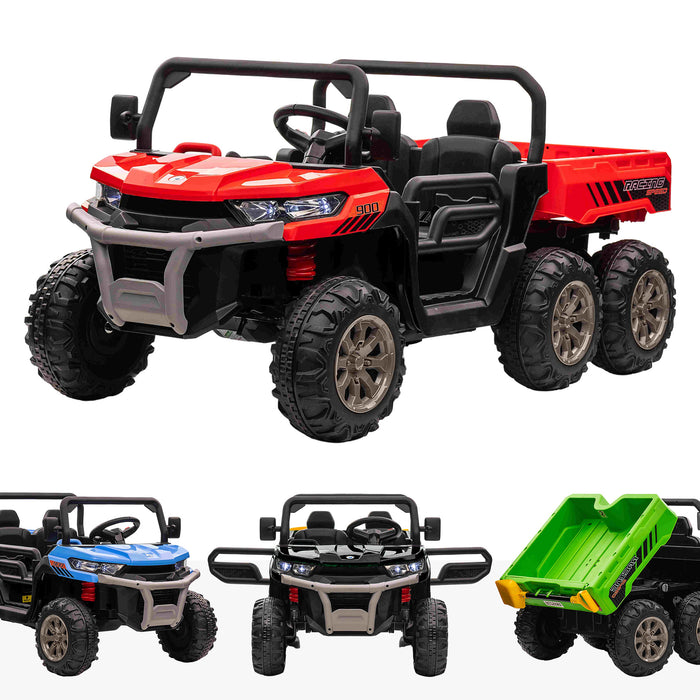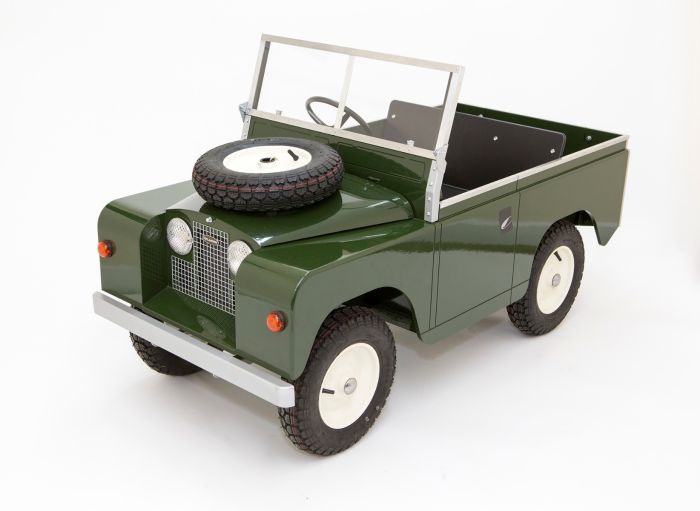Top News For Choosing Electric Kids Cars
Wiki Article
What Do I Need Know About Battery Life And Charging Times Of An Electric Ride-On The Kids' Car?
Knowing the battery type and charging time of an electric kids' ride-on vehicle is crucial to ensure optimal performance and continuous playtime. Here's what you should be aware of - Type of battery -
The majority of electric vehicles for children are rechargeable and utilize lithium-ion battery or lead-acid battery. Lithium ion batteries have a longer battery life than lead acid and are charged faster.
Battery Capacity
The capacity of a battery is measured in ampere hours (Ah) and watt hours (Wh). This determines how long an electric ride-on could run on one charge. Batteries with a higher capacity will provide longer playing time before needing to recharge.
Run Time -
The run time is the maximum duration of continuous operation an electric vehicle can provide on a single charge. This can vary depending on a variety of factors, including capacity of the battery, motor power, terrain, as well as the weight of the rider.
The run-time of electric ride-ons ranges between 30 to 2 hours. However, batteries with higher capacity might have longer time-to-run.
Charge Time
Charging time is the time needed to recharge the battery completely after it is depleted. Charge times vary based on the battery's capacity, charger specifications and charging method.
Charge times for electric ride on cars are typically between 8 and 12 hours. Certain models could have faster charging times, specifically equipped with lithium-ion batteries.
Follow the charging guidelines provided by the manufacturer to ensure the safety of your battery and its long-term durability. Overcharging or undercharging the batteries can have an adverse effect on their performance and lifespan.
Charging Method -
Electric ride-on cars usually include a charger that plugs into a standard home outlet. Some models can have fast-charging capabilities or include a smart charger that monitors the battery's state of charge and adjusts the charging rate according to the condition of the battery.
To prevent any damage to the electrical system or battery make sure that the charger and port are compatible with chargers provided in your ride-on car.
Additional Batteries
Some electric ride on cars allow you to purchase additional batteries or batteries to extend play time. Having extra batteries on hand allows you to swap out depleted batteries for fully charged ones, which reduces the amount of time between sessions.
Understanding the battery and charging time of a kid's car will help ensure that your child and you enjoy uninterrupted, fun time and exciting adventures. The battery's life can be extended by charging the battery frequently and employing proper charging methods. Check out the best kids cars for more tips including car on ride, riding digger, kiddies cars, ride of car, riding digger, ride ons, two seater childrens electric cars, car toy car toy, ride on digger, toy ride and more. .

How Can Kids Car Models Be Used Outdoors And Indoors?
Indoors or out, kids automobiles are designed to be used in different situations and environments. These are the main differentiators between these models Indoor Use Cars
Weight and size: Indoor cars are usually smaller and lighter in order for them to be tucked away in tight spaces such as living rooms, bedrooms, and hallways. These vehicles are compact and compact, allowing them to easily navigate around corners or narrow passages.
Low Ground Coverage - Cars intended for indoor use feature the lowest ground coverage to prevent them from becoming stuck or snagged against obstacles such as carpets and thresholds. This permits smooth, unhindered movement across indoor surfaces.
Smooth Wheels The wheels of indoor vehicles are typically composed of smooth materials such as rubber or plastic. This provides stability and grip on smooth surfaces like flooring made of hardwood, laminate floors, or tiles. They are specifically designed for indoor use, to reduce noise, and protect surfaces from scratching.
Limited Speed - When it comes to indoor use, cars usually are slower than usual to ensure that they can be safely operated and controlled in tight spaces. This could help prevent accidents and collisions with furniture, walls, or other objects that are found inside indoor areas.
Outdoor Use Cars -
Durable construction - Outdoor vehicles are built using durable materials, like metal or tough plastic to withstand rough handling and elements of nature such as temperatures, humidity, and sunlight variations. They are more resistant against wear and tear due to exposure to conditions outside.
Higher Ground Clearance: Outdoor-use vehicles have higher levels of ground clearance to navigate uneven terrain or bumps encountered when driving outdoors. This lets them traverse rough surfaces such as gravel, pavement, grass, or dirt without getting stuck or harmed.
Traction tires - Tires designed for outdoor vehicles usually come with treads and patterns which provide better grip and traction on rough or uneven terrains. This helps ensure stability and control on the outdoors to avoid sliding or skiing.
Weather Resistance - Outdoor use automobiles may have weather-resistant parts like sealed electronics, waterproof casings, or rust-resistant materials to protect against moisture and environmental damage. The car is able to be subjected to mud, rain and puddles with no performance loss.
High Speed - Outdoor use cars usually have higher maximum speeds to make room for open spaces as well as longer distances typically encountered in the outdoors. This lets children experience a more thrilling and adventurous journey when they are exploring the outdoors.
With these design traits and features, parents may pick a child's vehicle that best fits their requirements and the setting that they intend to use it, whether inside or outside. They can then ensure their child has a safe, fun, and lasting experience. View the best discover more for Audi kids car for more tips including ride a toy, two seater electric cars, car for toy, riding digger, kids electric cars, electric car ride, electric ride along car, toy car for car, ride a toy, race car toy and more. .

What Are The Different Types Of Remote Controlled Cars For Children? What Are The Advantages And Disadvantages?
Remote control cars for kids are also referred to remote controlled cars or RCs. They come in a variety of designs, prices and sizes that will suit any budget and taste. Here's a breakdown of the pros, cons, and sizes of remote controlled cars.
Electric RC Cars – Battery-powered remote controlled cars suitable for outdoor or indoor use. There are many different designs of RC vehicles like trucks, buggies and sportscars.
Nitro RC Cars – Gas-powered remote controlled cars with higher performance and speeds However, more maintenance and expertise is required in order to operate. Electric RC cars are smaller and less expensive.
Scale models are a replica of real-world vehicles such as trucks and cars. They are also controlled remotely. Scale models come in various scales, ranging from 10- to 1-24 inches and larger scales providing greater detail and realism.
Sizes -
Children's remote control cars are available in various sizes. They range from micro-sized replicas to huge-scale models. The size of the vehicle could influence the performance, speed, and handling characteristics.
Micro-sized vehicles are compact and lightweight, making them perfect for indoor use and play by younger children. These larger models have greater power and endurance and are suitable for racing outdoors and off-road driving.
Prices
Prices of remote-control children's vehicles depend on the factors that determine them, such as size, features and brand.
Small electric vehicles are available for purchase at prices of $20 to $100, and larger electric and nitro-powered RCs can cost between $100 and $500 or more.
The price of scale models as well as hobby-grade RC vehicles can vary between a few hundred dollars to over 1,000 dollars based on their performance and the level of detail.
Pros and Pros and
Pros -
Children and adults can enjoy the excitement and fun of remote-controlled vehicles.
Skill Development. The operation of a RC vehicle allows children to develop hand-eye-coordination, spatial awareness and problem-solving skills.
Social Interaction. Cars with RC encourage social interaction, and can be enjoyed by friends and families.
Customization - Many RC automobiles can be modified by utilizing aftermarket parts, upgrades and accessories to enhance performance and appearance.
Cons
Costs - Top-quality cars with advanced features, such as hobby-grade automobiles, can be very expensive.
Learning Curve: Operating an RC vehicle requires practice and skills, and younger kids may have difficulty with the controls in the beginning.
Maintenance: Cars in RC require regular maintenance that includes cleaning and oiling. Occasionally, they also require fixing or replacing parts.
Safety issues - RC vehicles are prone to danger in the event that they aren't operated properly under the supervision of an adult. They could cause accidents, fall hazards and electrical dangers.
Children of all ages will appreciate remote control cars. But it is essential to take into consideration aspects like cost, size and security prior to deciding on the right model. Hobby-grade RC automobiles are more suitable for older and enthusiast children, while simpler cars are ideal for children who are younger and beginner children. Follow the top rated Audi ride on car kidscars.co.uk advice for blog recommendations including car toy car toy, kidscars, race car toy car, ride electric car, electric toy car, toy car for car, toy car toy car, ride of car, lambo toy car, electric ride along car and more. .
